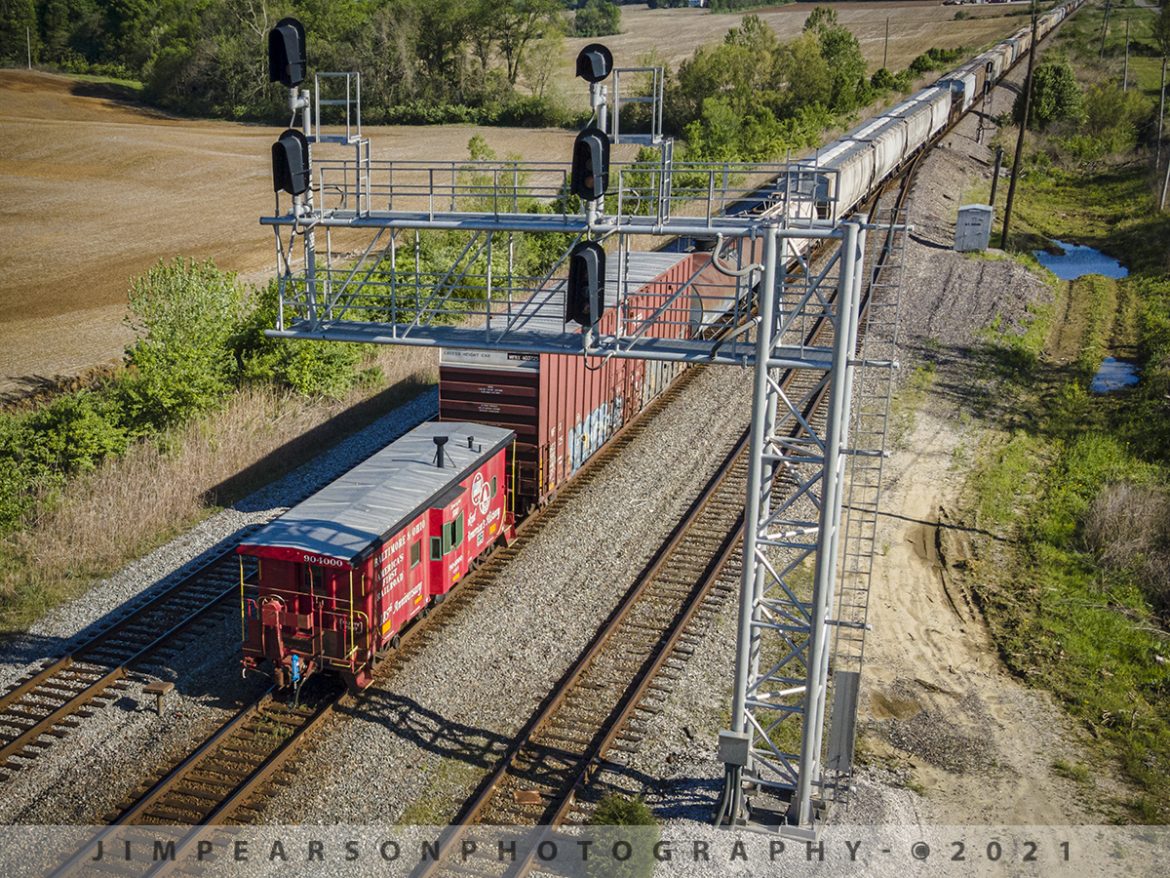Just something you don’t see much these days is a caboose on the end of a train, such as here where the B&Q 185th Anniversary Caboose bringing up the rear of CSX Q0648 as it passes the signal at the north end of Gibson Siding at Princeton, Indiana on the CSX CE&D Subdivision on May 1st, 2021.
I still remember as clear as day the times when this was an everyday occurrence and even manned with a crew, but today, it’s a rare occurrence and almost never with a crew. Mostly they’re in museums or used as shoving platforms for a crew when they’re working a yard or industrial complex that requires the conductor to ride on the end of the train as the engine shoves the train.
According to Wikipedia: A caboose is a manned North American railroad car coupled at the end of a freight train. Cabooses provide shelter for crew at the end of a train, who were formerly required in switching and shunting, keeping a lookout for load shifting, damage to equipment and cargo, and overheating axles.
Originally flatcars fitted with cabins or modified box cars, they later became purpose-built with projections above or to the sides of the car to allow crew to observe the train from shelter. The caboose also served as the conductor’s office, and on long routes included sleeping accommodations and cooking facilities.
A similar railroad car, the brake van, was used on British and Commonwealth railways (the role has since been replaced by the crew car in Australia). On trains not fitted with continuous brakes, brake vans provided a supplementary braking system, and they helped keep chain couplings taut.
Cabooses were used on every freight train in the United States until the 1980s, when safety laws requiring the presence of cabooses and full crews were relaxed. Developments in monitoring and safety technology, such as lineside defect detectors and end-of-train devices, resulted in crew reductions and the phasing out of caboose cars. Nowadays, they are generally only used on rail maintenance or hazardous materials trains, as a platform for crew on industrial spur lines when it is required to make long reverse movements, or on heritage and tourist railroads.
Tech Info: DJI Mavic Air 2 Drone, RAW, 4.5mm (24mm equivalent lens) f/2.8, 1/800, ISO 100.

